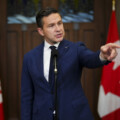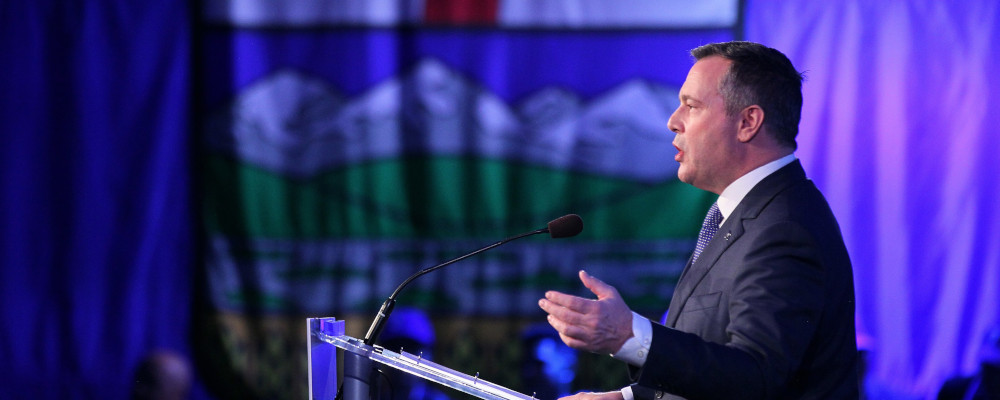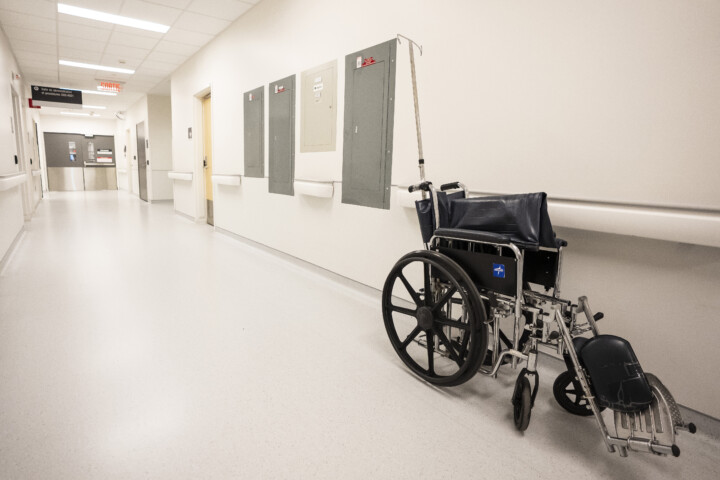“Equalization has become the most powerful symbol of the unfairness of Alberta’s deal in Confederation.”
With these words, Premier Jason Kenney confirmed Alberta will implement a core UCP campaign commitment — and recommendation of the province’s recent Fair Deal Panel — to hold a referendum on removing equalization from Canada’s Constitution. So on October 21, 2021, Albertans will answer a simple and clear question:
Should section 36(2) of the Constitution Act, 1982 — Parliament and the government of Canada’s commitment to the principle of making equalization payments — be removed from the Constitution?
Many have supported such a vote. Some blame the program for Alberta’s fiscal woes. Others view attacks on equalization as an outlet for other grievances — both real and imagined. If Quebec opposes a key source of fiscal benefits to Alberta (oil and gas), one argument goes, then so too should Alberta oppose a key source of theirs (equalization). And some, to be sure, have legitimate concerns with the specific design and implementation of the program.
But — and this is an important ‘but’ — the referendum is not about specific concerns or the equalization formula itself.
It’s about abolishing the very principle of equalization payments from Canada’s Constitution. It’s about rejecting what former Alberta premier Peter Lougheed described as “a crucial aspect of Canadian Confederation” and “a principle of Confederation that should be placed in the Constitution of Canada.”
Given the importance of this policy, and the tensions around it, Canadians — whether living in Alberta or not — should be aware of the program’s basic principle and what a vote to abandon it really means.
What is Section 36(2) and the principle behind equalization?
The referendum question asks about removing Section 36(2) from Canada’s Constitution. It’s therefore worth reading in its entirety:
Parliament and the government of Canada are committed to the principle of making equalization payments to ensure that provincial governments have sufficient revenues to provide reasonably comparable levels of public services at reasonably comparable levels of taxation.
There’s no language about specific design choices, or specific formulas. It only codifies the principle that provincial governments should have the ability to provide “reasonably comparable levels of public services” at “reasonably comparable levels of taxation.”
Should Canadians have comparable levels of provincial health and education services regardless of where they live?
That’s the question being posed. And it goes right to the heart of Canada’s system of government.
Why the principle matters in Canada
Canada is a large and diverse country, both physically and economically. Some regions are high-income while others are low. This has always been true, and from 1867 onwards federal policies have consistently attempted to bridge those divides and hold the country together.
Today, regional inequalities are lower than they have been historically but they remain large. In 2019, average family income in Prince Edward Island was $68,700 while in Alberta it was $99,600. In Calgary, average incomes exceed $109,000. In Québec City, $78,800.
Such differences make it harder for some regions to deliver core public services than others. Low-income regions, after all, have a more difficult time raising revenues. A point of income tax will raise more dollars for a provincial government of a high-income region than that same point will in a low-income one. And since higher incomes mean higher spending, a point of sales tax will raise more in high-income regions than low. Corporate profits are also unevenly distributed, with most head-offices located in Toronto, Calgary, Vancouver, or Montreal.
For perspective, across all the main forms of taxes, from personal and corporate income taxes to consumption and property taxes, the latest estimates for 2019-20 show that PEI would raise less than $6,700 per capita if its tax rates and structures equalled the national average. Alberta, meanwhile, would raise nearly $11,400 per capita.
These gaps are large, and equalization tries to overcome them.
In essence, any province that has a below-average ability to raise revenue will be topped up by the federal government to the national average level. Or, to use the equalization program jargon, the program tops up provinces with below-average fiscal capacity, which I illustrate below for the latest year’s data and payments. (For more, there’s an equalization simulator you can use to better understand the program.)
Equalization payments therefore spare lower-income provinces from having to choose either lower-quality public services or abnormally high taxes. For perspective, without equalization payments, PEI would need to impose a sales tax rate of 24 per cent instead of its current 10. Alternatively, it could cut its entire healthcare, K-12, and post-secondary education spending by roughly one-third.
Importantly, high-income regions do not themselves transfer funds to lower-income ones. When politicians in Alberta speak of transferring billions to other provinces “through equalization,” they’re stretching the truth.
“At the end of the day,” said former federal finance minister Jim Flaherty, “equalization is a federal program paid for by the resources that flow to the Government of Canada from taxpayers in Canada paying Canadian taxes.”
A Canadian commitment to fairness
By using federal revenues to support low-income provinces, a program like equalization helps ensure similar opportunities for quality healthcare and education exist for all Canadians. This “reflects a distinctly Canadian commitment to fairness,” wrote an expert panel, chaired by former Alberta deputy treasurer Al O’Brien, which largely designed the system we have today.
This was indeed the original motivation for the program, implemented by Liberal prime minister Louis St. Laurent in 1957 and supported by his Conservative successor John Diefenbaker (a western Canadian, I must note).
To quote the 1957 conservative election platform, “We believe in one Canada, with equal opportunities for Canadians in every part of this country. We consider that there can be no national unity, indeed, that national unity is an empty dream, until that end has been achieved.” And he viewed programs like equalization as necessary to ensure provinces had fiscal resources to deliver public services themselves, thereby avoiding increased centralization in Ottawa.
For these reasons, and more, Alberta supported including the basic principle of equalization into the Constitution. In 1978, it published a report entitled Harmony in Diversity (its position paper on constitutional change), stating that “the Alberta Government believes that this [equalization] is one of the most equitable methods of maintaining the economic well-being of Canadians.”
Alberta’s support goes back even further. Social Credit premier Ernest Manning, who had serious concerns with the program and Alberta’s losing out on payments, noted “we have to have some form of equalization because of the country’s size,” and “we accept the premise that every Canadian is entitled to a base standard.”
The particulars of the program may fall short of its objectives, of course. Support for the principle of equalization, however, does not imply support for any specific formula.
There’s a long list of valid and thoughtful practical concerns: the inclusion of resource revenues, the treatment of hydro revenues, the fixed pool of payments, no measure of expenditure needs, and so on. Equalization can — and must — be continually improved as economic and fiscal circumstances change. Canada in 2021 is different from the Canada of 2007, which is different from the Canada of 1982 and of 1957.
Raising concerns around the program’s design and operation is one thing. Rejecting the very principle that underpins it — and therefore rejecting the very existence of the program or anything like it — is quite another.
Whatever reforms one might wish, abolishing the program won’t help achieve them.
What will the referendum accomplish?
“We need to be clear,” said former prime minister Stephen Harper, in response to Alberta’s last major attempt to make waves over the program in 2006, “Equalization is not an Alberta program or an Ontario program. Equalization is a strictly federal program.”
Some believe a referendum will force the federal government to the negotiating table. Whatever the legal merits of this argument, the practical implications are nil.
First, the government of Alberta has put forward no specific reforms that would materially affect Alberta. So what is to be negotiated? And second, the federal and provincial governments are already at the table (specifically, through several intergovernmental committees, including one focused solely on fiscal arrangements and transfers, not to mention First Ministers’ Meetings). Alberta therefore has every opportunity to put forward reforms.
The referendum question is clear and the decision for Albertans simple. If you disagree with the principle of equalization payments, vote yes. If you agree with the principle — of supporting regions that have a hard time delivering basic public services — then vote no.
The referendum’s result is not a foregone conclusion. It may very well fail if focused on the actual question of whether one supports equalization’s basic principle or not. Indeed, a recent and detailed Environics study found 57 per cent of Albertans support it.
It’s for this reason that the campaign and the government will surely focus on other issues and grievances, from perceptions of unfairness to pipelines and carbon taxes. This would be unfortunate.
“A proposal to alter the Constitution is a serious matter,” said Alberta’s Justice Minister Kaycee Madu. He’s right.
Alberta has a long tradition of supporting the principle of equalization, whatever faults the program may have in practice. We committed to it, explicitly through premier Lougheed, when the Constitution was signed and throughout the negotiations.
Voting to abandon this crucial aspect of Canadian Confederation should not be taken lightly.
Recommended for You

‘A failed state because of this regime’: Niall Ferguson on Venezuela’s future following Trump’s capture of Maduro

‘A more dangerous world’: America’s Venezuelan invasion—should Canada be worried?

Disabled Canadians should never feel compelled to die. Let’s give them the support they need to live

Why impatience may be Pierre Poilievre’s only path to victory





Comments (0)